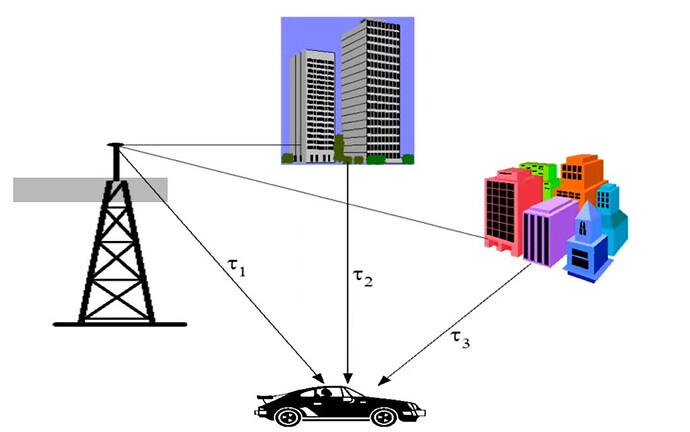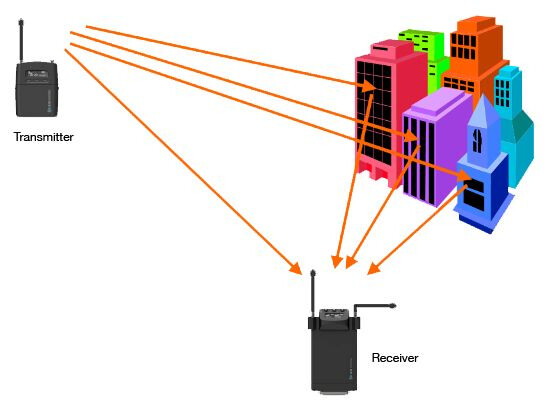Simple and intelligent explanation of the problem.
During wave propagation, several issues may arise, and one of these is Multipath Fading. This phenomenon is a consequence of the dynamic nature of signal power as it travels through space.
When a signal is transmitted, it does not propagate in a single direction but follows the angle of the transmitting antenna. This can lead to multiple paths that the signal can take, even when intended for a specific user.
For example, when a signal is directed towards a user, part of it may reach the user directly.
Simultaneously, another part may bounce off buildings or other structures before reaching the user.
This results in the mobile phone receiving the same signal through multiple paths of varying lengths.
However, a challenge arises because these paths have different lengths, while the speed of signal propagation remains constant. Consequently, the time it takes for the signal to reach the mobile device varies for each path. This variation can lead to signal interference and changes in signal quality.
In situations where all paths have the same frequency, they can either reinforce or cancel each other out, depending on their relative phases. This phenomenon is not termed interference since it involves the same frequency and signal.
To understand this better, let’s consider three paths: T1, T2, and T3. The relative phases of these paths determine whether the interference is constructive or destructive. Often, the phase is based on a wavelength divided by two or a full wavelength. However, when the mobile phone is in motion, the relative phases change.
If one of the paths reaches the mobile phone directly from the base station, it is known as ricanfading and is considered the path of least loss. Fading may not have a strong impact if there is a direct path, but if all paths are reflected without a direct one, fading effects become more significant.
Some studies suggest that changing the frequency can alter the fading characteristics. For instance, if a call is made at one frequency (F1) and experiences destructive interference, making a subsequent call from the same location but on a different frequency (F8) may result in constructive interference.
This change in frequency alters the wavelength and, consequently, the signal’s characteristics.
To address the challenges posed by fading, several solutions exist, which will be discussed in part 2.
Credits: ![]()

